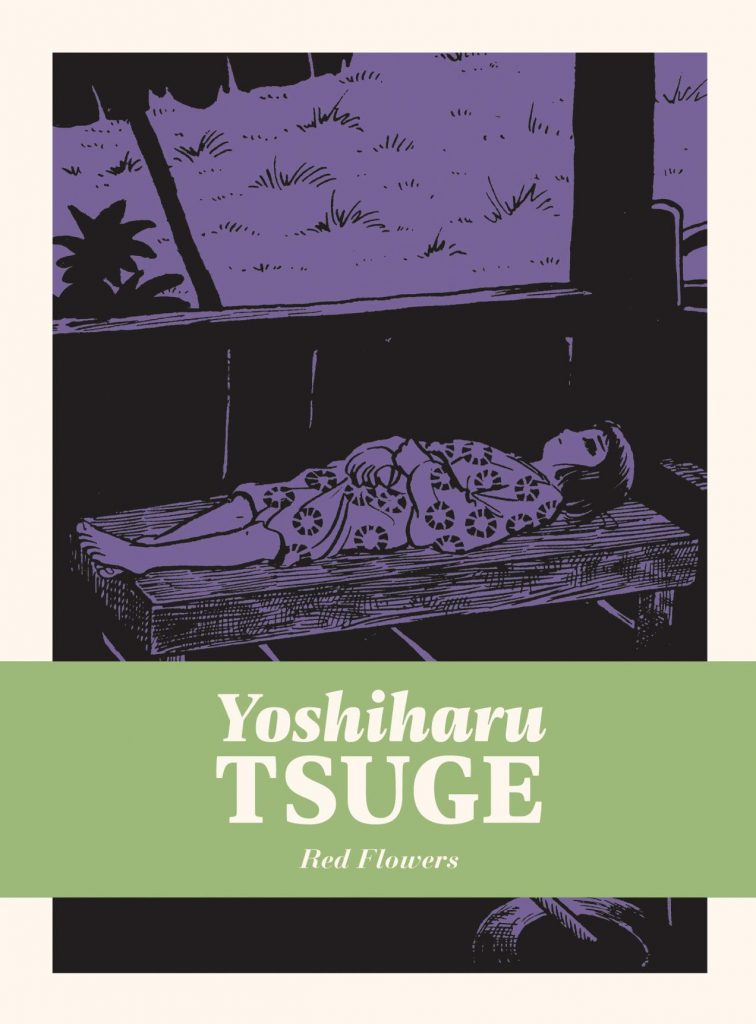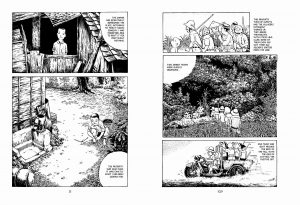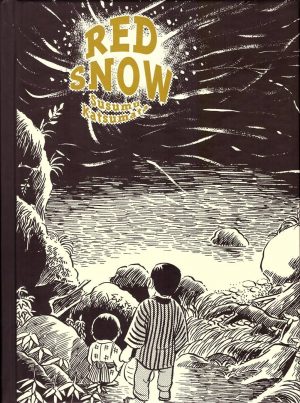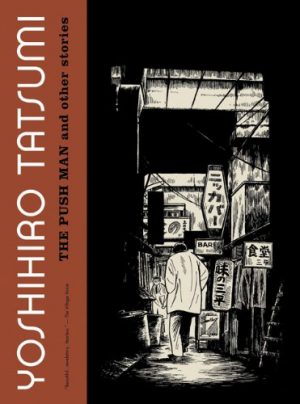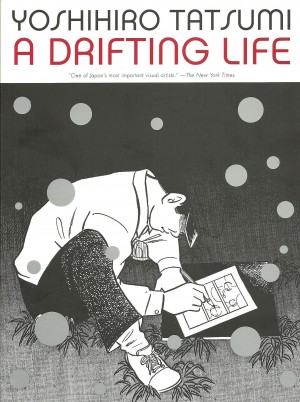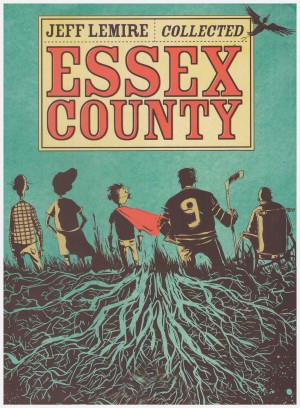Review by Frank Plowright
By the standards of Japanese comics, Yoshiharu Tsuge’s output is relatively compact, yet his short stories revolutionised manga by dropping genre trappings to focus on people’s circumstances and their feelings, in his case often a first person narrative. The transformation began in period of mid-1960s frustration as detailed by Mitsuhiro Asakawa’s essay accompanying his opening batch of new stories in The Swamp. The transition begun there takes a considerable leap as it flourishes in Red Flowers, with another long essay by Asakawa and translator Ryan Holberg offering additional information about each of the dozen stories presented, originally published in 1967 and 1968.
To a degree, the accompanying explanations add a layer of mystification to what’s relatively straightforward and easily understood. ‘The Wake’ is a knockabout farce of raucous travellers having an unusual experience; ‘The Salamander’ has the amphibian addressing the audience directly about its life in the sewer; and ‘The Lee Family’ concerns the narrator letting a family move into his run down shack. All have moments of hilarity, strangeness and unfamiliarity, and depending on individual interpretation, horror also. They raise as many questions as they answer, with motivations far from transparent, but all are thought-provoking and interesting offering a unique storytelling voice. Tsuge sees the world in a certain way, and questions only he’s likely to ask provide the delights. It’s continued all the way through, with enigmatic conversations occurring as we drift in and out of people’s lives with mystery, amusement and occasional second hand horror intruding.
The title story is one of the few Tsuge creations seen before in English, included as an insert in Raw, but with a different translation. It’s phenomenal, a beautiful understated confluence of torment, atmosphere and a literal coming of age where each of the three characters lacks an understanding. Holmberg considers his new translation more faithfully captures the distinct mood Tsuge wanted to convey, and Tsuge accompanies a relatively simple tale with rich artwork prioritising the beauty of the countryside.
That pastoral beauty takes a greater prominence in subsequent tales as we visit remote springs and mountain ranges, reflecting Tsuge’s own journeys to the countryside. Here Tsuge follows the example of Shigeru Misuki’s Kitaro, in which even simpler people are placed over even more complicated backgrounds. That doesn’t apply to the final story, not presented chronologically, and with something of Will Eisner’s expressionistic art about a group of tourists in Egypt trapped in shifting sands. It’s a downbeat comment on human nature being essentially selfish.
On the face of it Red Flowers contains simple stories very nicely drawn, but the devil’s in the detail. The first person narration Tsuge supplies is all we’re told, and are the narrators always reliable? Why does a fisherman return a man to captivity, yet free a trapped fish? Is it a form of penance or just unthinking? Such questions can be asked about the protagonist of nearly every story here, although the recurrence of themes such as isolation, fishing and eccentricity/insanity offer clues. Travellers frequently feature, usually accompanied by an abiding sense of fatality and acceptance, and turning up in less than ideal accommodation. One visitor reveals he draws comics, but it’s not much of a living, and that he’s currently lacking inspiration.
In later years Tsuge would become reclusive himself, and his output dwindled, yet collectively the stories in Red Flowers are an astounding burst of creativity, extraordinary quality sustained over an eighteen month period. They’ve not lost their beguiling nature in over fifty years, and so stand as timeless. Nejishiki is next in the chronological reprint series.
